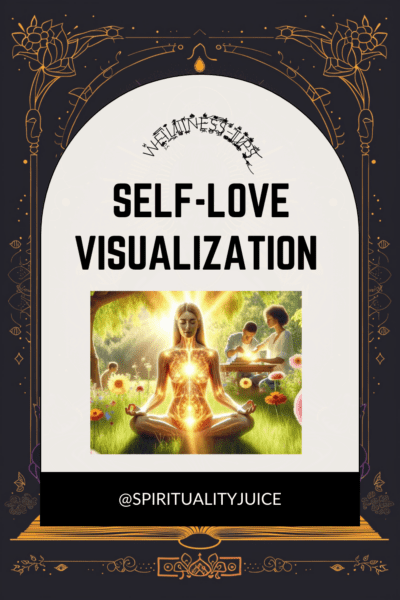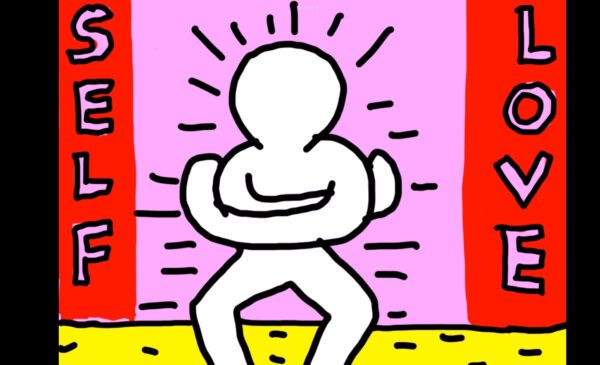I think that when you find the best time to meditate you actually find your, so to say, meditation rhythm. For me it, as soon as I got into my routine, with meditationwas when I saw all the benefits of meditation.
Why is establishing a ritual of consistent meditation so important? Finding the best time to meditate literally is the only way to reap the benefits of meditation (in my opinion). That is, if you are an inconsitent meditator well hell…you might as well not do it at all.
So let’s focus here more on finding your “meditation rhythm”. Because in answering that question, “what is the best time to meditate?” You want to ask yourself: What is the best time for me so that I can be consistent?
So as I delve deeper into the different aspects of meditation; from its benefits to tips for beginners and resources recommended, our most important goal is to help you pinpoint what is the best time to meditate.
Finding your Meditation Rythm

Maybe your rythm is the calm of the morning mediation, the pause of the middle of the day meditation, or the relaxing release of a night meditation. Establishing a routine that is suitable to your life can improve your meditation and how it affects your life.

In some aspects you want to be lead here. You want to be lead by your inner biology calling you. If you find your best time is on your drive to work, do it! I mean being simply mindful can well enough be enough of a refueling of the mind.
What kind of Meditation are you doing exactly?
Believe it or not there are different forms of meditation that you can do. Yes, the modern permutation of this practice has us thinking anybody who sits and just chants “Om” or does transcendental meditation is somehow doing Meditation proper. However, there are many Different types of meditation for you to take advantage of here. Remembering this can help you decipher which meditation you want to do and when.
Dynamic Meditation
Dynamic meditation was unique in its approach, disregarding the old tradition of stillness and sitting, and instead adopting something much more rapid and cathartic, with energetic movement and shaking, sometimes accompanied by vocalizing. The whole purpose of all these is to allow for the trapped emotions and stagnant energies that bring one into a state of inner peace and clarity, all through letting go and allowing the physical vehicle to move freely.
1)Jogging Meditation

I mean if you are doing some sort of “jogging meditation” which is a form of “dynamic meditation.” Doing it at night it probably not a good idea. You have to get up in the morning. Osho the sex guru was big on dynamic meditation. Mainly because any form of meditation or yogic practice should be specifically tailored for the culture its meant to inhabit.
2) Osho Dynamic Meditation
For Americans and busy westerners it was clear that sitting still is difficult enough. There has to be some sort of bodily movement Osho believed.
3) Zikr or Gospel Music Dancing
Zikr is predominatnly an islamic practicional practice. As a dynamic meditation, students recite holy phrases in unison while practicing synchronized breathing and movement to intensify meditation and development of the bond with the Divinity.
On the other hand, Gospel Music dancing is an artistic way of moving in time with soul-touching melodies which bring people together to be edified emotionally, relieved and uplifted spiritually. I mean its really intense to watch these people really become invigorated by the music.
Both the methods involve dance and music which are two strong sources for rising the consciousness in the midst of daily life that offers an inner experience of meditation that energize the body while providing a calm mind, is another form of dynamic meditation.
Static Meditation
With all that being said, dear reader, I do get the feeling none of that “hippie stuff” is really your gig. So I mean, you’re probably geared towards the standard “run of the mill” seated meditation kind of stuff.

1)Zazen
Zazen meditation, the mainstay of Zen Buddhist practice, is a sitting meditation which elicits a profound sense of calm and mindfulness. This technique emphasizes on the holding of a certain posture, being aware of breath, and having the mind free from the attachment to the thoughts and sensations. Zazen is not designed to get pleasure or enlightenment but rather to feel the practice of just being, that is, to experience reality as a non-dualistic experience.
2)Transcendental Meditation
Transcendental Meditation (TM) is a kind of silent mantra meditation based on the teachings of Maharishi Mahesh Yogi. It calls for the practitioner to sit down comfortably, with the eyes closed, silently repeating a mantra, a sound or phrase given to them, usually for 20 minutes twice a day.
Exploring Different Times to Meditate
Morning Meditation
Advantages:
Starting your day with meditation can truly transform your daily routine. The morning, with its idyllic silence, offers a unique opportunity for meditation. When you first wake up, your mind is still fresh and uncluttered by the day’s worries, making it easier to enter a state of deep meditation. By meditating in the morning, you set a calm and peaceful tone for the rest of your day. It’s a moment of solitude, where you’re less likely to face interruptions, allowing for a more focused and meaningful practice.
Disadvantages:
However, morning meditation isn’t without its challenges. For many, the biggest hurdle is the struggle to wake up early. This can be particularly difficult for those who aren’t naturally morning people or have a packed schedule. Additionally, there’s the risk of feeling rushed during your practice, especially if you’re trying to fit meditation into a tight morning routine. This can detract from the experience, making it feel like just another task to check off your to-do list rather than a nurturing start to your day.
Afternoon Meditation
Advantages:
Midday meditation is a perfect intermission in a very busy day—time enough to stop, reset, and refuel. With the help of midday meditation, work-related stress could be taken care of, and the problems of midday slumps, of which most of us are aware, could easily be overcome. While taking lunch, take a few minutes for meditation and significantly lower your stress levels. Clear your head during this period, and you will take on tasks in the afternoon more focused and more productive than before. This practice could be of particular benefit, especially in maintaining high levels of performance and well-being at a very demanding work environment.
Disadvantages:
Well, of course, there are a few cons to meditating in the middle of the day, though, as follows: As with many challenges in life, the greatest challenge is distractions. This is through just because most people work at this time of the day. At this time you’re the most bombarded with stuff flying at you. All these different stressors are vying for your solitary meditation time. In fact, if timing is to be looked at, then there may be no time for a midday meditation session, since most people have very busy times at this time, and may not really get time to create enough time for the whole session.
Evening Meditation
Advantages:
The evening meditation gives a great chance for people to relax and reduce stress after a busy day. It is a soft bridge from the activities of the day into rest; hence, it gives one time to think about the day’s happening and accomplishment. In this simple way, the mind and body will come into “sleep mode” as a prerequisite for a restful sleep. In addition, meditation before sleeping may be instrumental in processing whatever experiences were received throughout the day, and one may come out with a feeling of gratefulness and satisfaction, hence boosting overall well-being.
Disadvantages:
Nevertheless, meditating at night has its own issues. This generally brings another common obstacle in the sense that the meditation practice becomes very hard to concentrate on, since it mostly leads to feelings of tiredness or sleepiness, thus becomes less effective or enjoyable. Besides, family matters may come in the way, or there might be some urgent house chores that interrupt your meditation session, making it not possible to reach a further state of relaxation or mindfulness.
Let the entire day become your Meditation
I mean, this is an advanced level meditation. At this point you’ve reached satori or enlightenment. As you do your work or experience your life you are really experiencing it. You are not longer thinking about the future, you aren’t mulling over the past. When you breath, you breath and when you eat you eat.
Many of us aren’t quite here yet. Meditation really takes many years to truly master.
Finding Your Ideal Time to Meditate
Discovering the best time to meditate is a personal journey that requires tuning into your own natural rhythms and routines. Here are some strategies to help you identify when you might be most receptive to meditation:
Consider Your Natural Energy Levels
Do you see the sun as an aura of invigoration, or do you feel better when the evening is already fading away? Knowing if you’re a morning or night person can help you decide on a time when you are more likely to be alert and focused naturally. For morning people, it is likely to have an easier time incorporating meditation in their early routine. However, those who are of the night owl type might prefer to meditate in the evening as a method of reflection and unwinding.
Identify Distractions in Your Schedule
Letting yourself find the perfect moment that your attention is most likely not to be disturbed is truly the heart of meditation. So I say, scrutinize your day-to-day schedule. Point out times when you are free from typical distractions from the outside world. The practice might involve meditating early in the morning prior to the rest of your family wakes up or in the mid-morning when your colleagues are likely to be busy in their offices, thus reducing the likelihood of a meeting request.
Additional Tips for a Successful Meditation Practice
Start Small and Be Consistent
The important thing to note, when embarking on the spiritual journey of developing a meditation practice, is to make the time consistent with the practice, not how long you meditate. From the start, practice for about half an hour. But if it is hard to start, let’s start with 5-10 minutes a day and add few minutes to it every day. Consistency serves in brining forth habit, meaning a meditation habit will be naturally reflected in your daily routine.
Create a Comfortable and Quiet Space
Having a dedicated space for meditation can significantly improve your experience. Choose a spot in your home where you’re unlikely to be disturbed, and make it as comfortable and inviting as possible. This could be a quiet corner with a cushion or a chair, away from the hustle and bustle of household activity. A serene environment not only helps in minimizing distractions but also signals your brain that it’s time to relax and meditate.
Use Guided Meditations or Apps (if thats your thing)
For those new to meditation, guided sessions can be incredibly helpful. Guided meditations provide structure and direction, making it easier to focus and stay engaged throughout the practice. There are numerous meditation apps available, such as Muse 2, which uses meditation technology to enhance your experience, and other resources offering guided sessions for various goals, including stress relief, sleep improvement, and mindfulness. Experiment with different guides and styles to find what resonates with you.
By incorporating these tips into your routine, you can navigate the challenges of beginning and maintaining a meditation practice. Remember, the goal of meditation is not perfection but progress. With patience and persistence, you’ll find your rhythm and reap the myriad benefits meditation has to offer.




